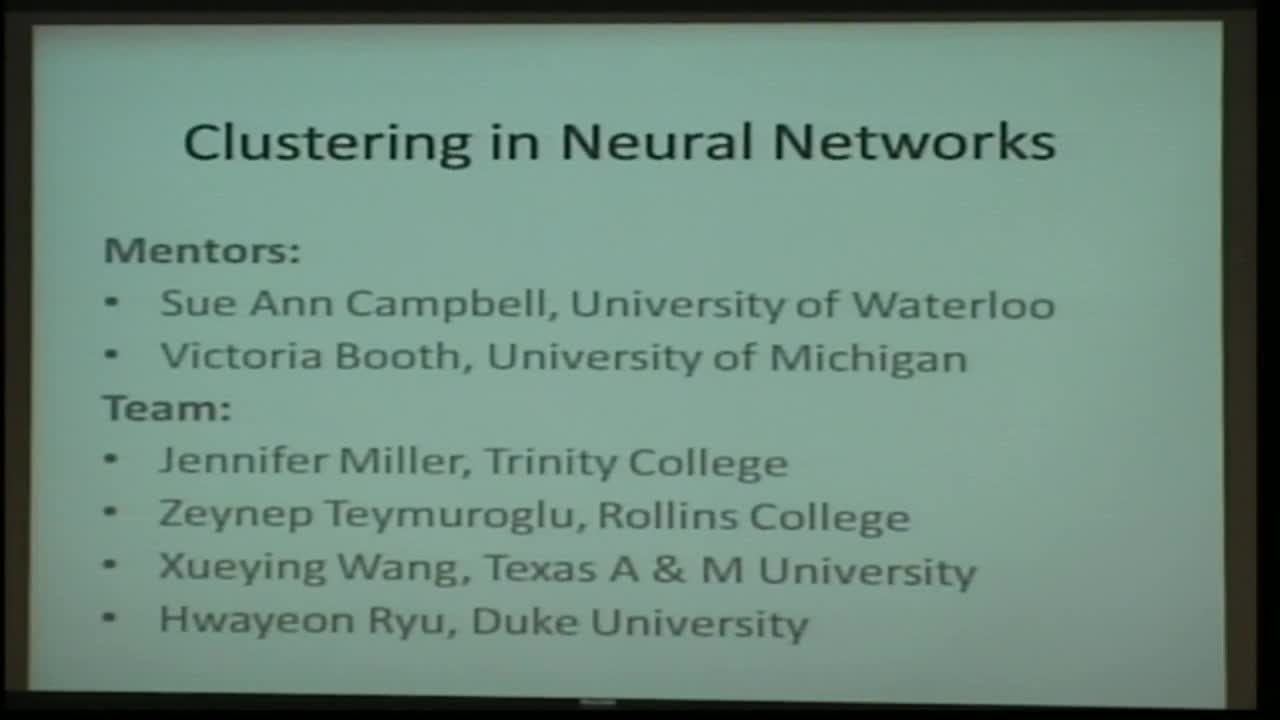Abstract
Clustering is a stable phase-locked activity pattern that has been observed in networks of intrinsically oscillating neurons. In these states the network breaks up into clusters. Neurons within a cluster exhibit phase-locked behavior with zero phase-lag, while between clusters neurons are phase-locked with non-zero phase-lag. Clustering has been proposed as a way of inducing network level oscillation frequencies which individual oscillators are incapable of producing (Kilpatrick & Ermentrout, 2011). In networks with all-to-all coupling, multiple stable cluster states can co-exist (Golomb & Rinzel, 1994). This multistability enables the network the flexibility to respond to different inputs with different frequencies.
The existence and stability of cluster states has been studied using phase model reductions (Okuda, 1993), direct analysis of the network (Choe et al., 2010), numerical simulation and numerical bifurcation analysis (Golomb & Rinzel, 1994). The majority of this work has been restricted to networks of identical neurons with all-to-all coupling. Indeed, the existence of clustered states can be attributed to the inherent symmetry in such systems (Ashwin et al., 2010). However, clustered states have also been observed in more realistic models. For instance, Li (2003) showed that heterogeneity in the coupling strengths can stabilize otherwise unstable phase-locked states. Chadwick (2005) showed that clustered states which are stable in an all-to-all coupled network of identical neurons can persist in the presence of mild heterogeneity of the oscillator frequencies and the loss of some connections in the network.
A more systematic study of clustered states in more realistic networks is needed. This project will start to fill this gap by quantifying how various factors affect the existence and stability of cluster states, the corresponding network frequencies, and the presence of multistability. The exact factors considered will depend on the interests and background of the participants. Potential factors are: the presence of heterogeneity (e.g. in the firing frequencies of the individual neurons), network properties (topology, type of coupling, coupling delay), intrinsic cell properties (type I vs type II oscillators, presence of spike frequency adaptation) and presence of noise.
This project will include opportunities for those with interests in any or all of the following: mathematical analysis (stability, bifurcations, perturbation theory, network theory), numerical simulation and numerical continuation both for deterministic systems and systems with noise.
References
P. Ashwin, G. Orosz & J. Borresen (2010) Chapter 3 of Nonlinear Dynamics and Chaos: Advances and Perspectives.
J. Chadwick (2005) Summer Research Report. University of Waterloo.
C.-U. Choe, T. Dahms, P. Hoevel & E. Schoell. (2010) Physical Review E 81 025205.
D. Golomb & J. Rinzel (1994) Physica D 72(3): 259-282.
Z.P. Kilpatrick and B. Ermentrout (2011) PLoS Computational Biology 7(11) e1002281.
Y.-X. Li, Y.-Q. Wang & R. Miura (2003) J. Computational Neuroscience 14(2): 139-159.
K. Okuda (1993) Physica D 63: 424-436.
